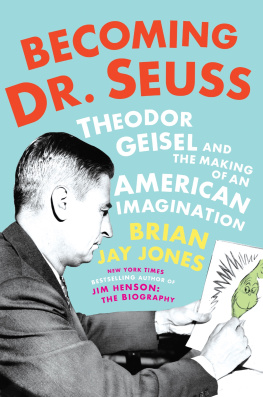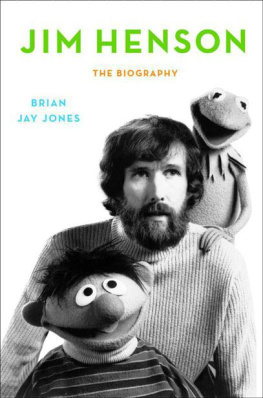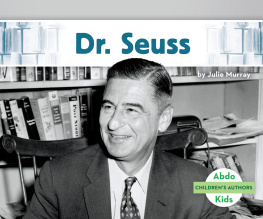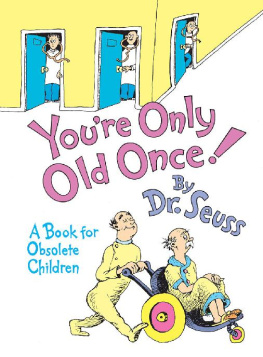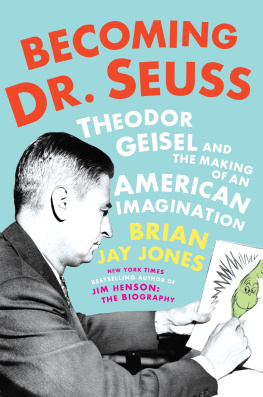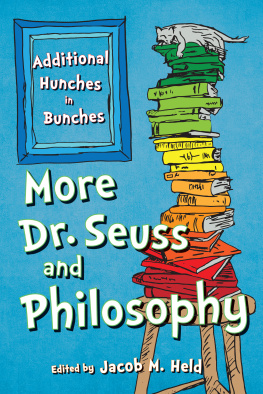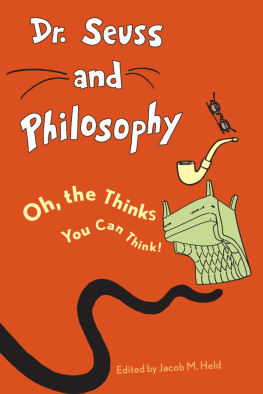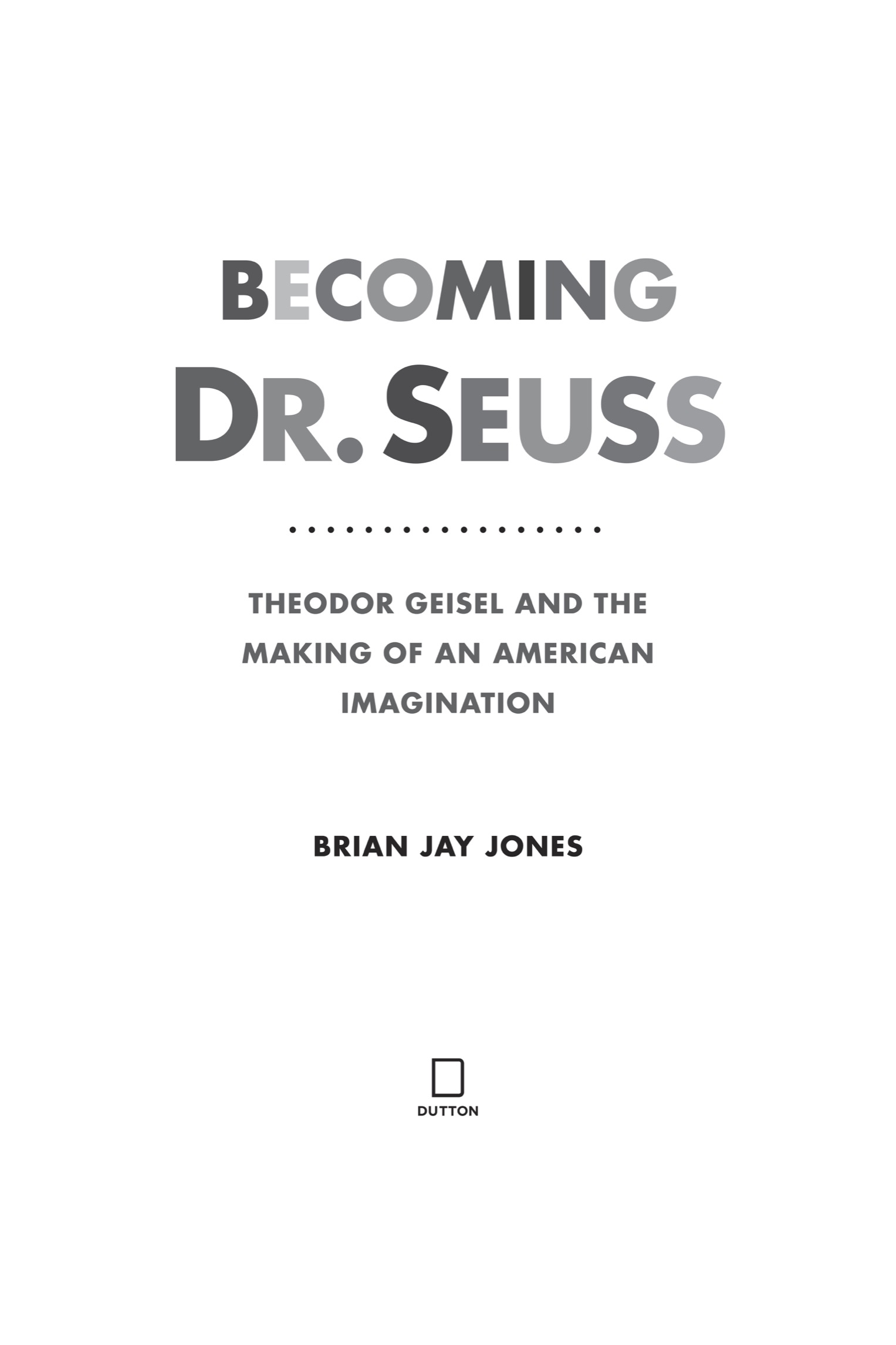STINK. STANK. STUNK.
19631967
CHAPTER 1
MINNOWS INTO WHALES
19041921
On paper, Mulberry Street doesnt look like much. Its just another residential street on the city map of Springfield, Massachusetts, a slightly bent capital letter L lying on its back, not much more than a pass-through between the busier streets of Union and Maple. The street itself is quiet and relatively nondescript, with very little indication that its a major destination on a map of the American imagination.
But sure enough, it was hereat least as told in the tale by Springfields own Dr. Seussthat a little boy named Marco used his imagination to transform a simple horse and wagon into a colorful spectacle, with a brass band pulled by an elephant-riding sultan, flanked by motorcycle policemen and confetti-dumping airplanes, while enthusiastically being reviewed by the top-hatted mayor and the town aldermen. Modern-day pilgrims still flock to Mulberry Street, slowly trolling the neighborhood, windows down, hoping to catch a glimpse of somethinganythingthat inspired the magnificent imaginations of Marco and Dr. Seuss. Residents smile knowingly, pausing over lawn mowers and trunks still filled with groceries to answer the same question from visiting wayfarers.
Where did Dr. Seuss live?
The answer, it seems, is as disappointing as discovering Londons 221B Baker Street is actually home to a bank, and never was home to Sherlock Holmes. Dr. Seuss didnt live on Mulberry Street at all. Instead, pilgrims are directed to another spot on the map, another inverted L about two miles south: Fairfield Street. This is where Dr. Seuss grew up, and the house he lived in for nearly twenty years, at number 74, is still there, looking much as it did during his lifetime.
Parts of Springfield, in fact, look as they did during Dr. Seusss dayor at least the places that shaped his imagination and influenced his art can still be seen if one knows where to look. A few blocks from Fairfield on Howard Street stands the old armory. Its curved stone turrets are reflected in the castles populating so many Seuss books. Over in Forest Park, the Barney Mausoleumbuilt with a family fortune earned by inventing and selling clamp-on ice skateslooms two stories above the pavement, with the curving staircases and pillared archways that would show up in The 500 Hats of Bartholomew Cubbins. And the nearby Forest Park Zoo? That was where [I tried to] draw the animals, said Dr. Seuss later. I didnt know how to draw, so theyd come out strange.
Dr. Seuss didnt produce Springfields only creations. Founded by the Puritan William Pynchon in 1636 on a high bluff overlooking the Connecticut River, Springfield has been nurturing and stirring American imaginations for nearly three hundred years. American independence was won with the reliable ammunition and gun carriages produced at the Springfield Armory beginning in 1777. (A decade later, Daniel Shaysspouting a different kind of idealismwould attempt to steal muskets and ammunition from the same armory in a thwarted attempt to overthrow the government of Massachusetts.) By 1795, Springfield Armory would regularly be producing the muskets that would be carried on the shoulders of American soldiers all the way through the War of 1812 and on into the Civil War.
Weaponry wasnt Springfields only specialty; true, local businessmen Horace Smith and Daniel B. Wesson, who developed the firearms company that bore their last names, had roots in the townbut so, too, did Charles Goodyear, who discovered and patented the process for making vulcanized rubber in a small Springfield factory in 1844. A year earlier, two industrious Springfield publishers, brothers Charles and George Merriam, acquired the rights to publish Noah Websters An American Dictionary of the English Language, marking the founding of another iconic American brand.
There was Milton Bradley, who would launch the American board game industry by cranking out the earliest incarnations of The Game of Life in his lithography studio in 1860. Over on State Street, the beloved and reliable Indian motorcycles would roll out of the companys Springfield factory from 1901 until 1953. Even modern sports would find their origins in the town when in 1891 a Canadian-born physical education teacher named James Naismith, looking to keep his classes occupied through the long, cold Massachusetts winters, mounted a peach basket on a ten-foot pole in the gymnasium at the International YMCA Training School andopting not to name the game after himselfchristened the new game

